Joaquin Seys is at left-back in Total Football Analysis’ 2025 Breakout XI.
It’s been quite the year for Seys, who has gone from playing in Club Brugge’s reserve team, Club NXT in the second tier, to becoming a nailed-on starter for the senior squad in a matter of months.
What catches the eye about him is his conversion to right-back since joining Nicky Hayen’s team in the summer, having never played the position before at Club NXT and indeed performing as well as he has since switching flanks.
He also earned a call-up from Domenico Tedesco for the Belgian senior national team for November’s UEFA Nations League games.
However, he couldn’t participate after picking up an injury shortly after the announcement.
And to put the cherry on top of the cake, he recently won the Dominique D’Onofrio Prize, awarded to the best debutant of the year in the Belgian Pro League, which made him only the second Club Brugge player to win the award after Charles De Ketelaere.
Quite an impressive progression in a short space of time for a player who had never represented his country beyond the U19s at the national level, and the way things are going, there’s a lot more in store for Seys in 2025 and beyond.
We may be cheating a bit by including him as a left-back, given that he’s been a mainstay on the opposite side of his club in recent months.
But given that he’s still naturally a left-footed left-back and that he is one of the fastest-rising young players in Europe in either position, we believe his place in our team is more than justified.
This scout report and player analysis will examine Seys’ progression this season, his strengths and areas for improvement, and what makes him one to watch in 2025.
Joaquin Seys Statistical Profile
Joaquin Seys is a 19-year-old full-back who has played for Club Brugge since he joined them from Oostende in 2012 when he was seven.
He’s also amassed twelve caps for Belgium’s youth national teams at U18 and U19 levels before his maiden senior call-up in November 2024.
At 1.78m (5’10’) and 64 kg (141 lbs), Seys has all the essential ingredients of a modern full-back: quick, athletic, technically solid, and contributive both on and off the ball for his team, covering a lot of ground each game up and down the flank.
Joaquin Seys Radar Map
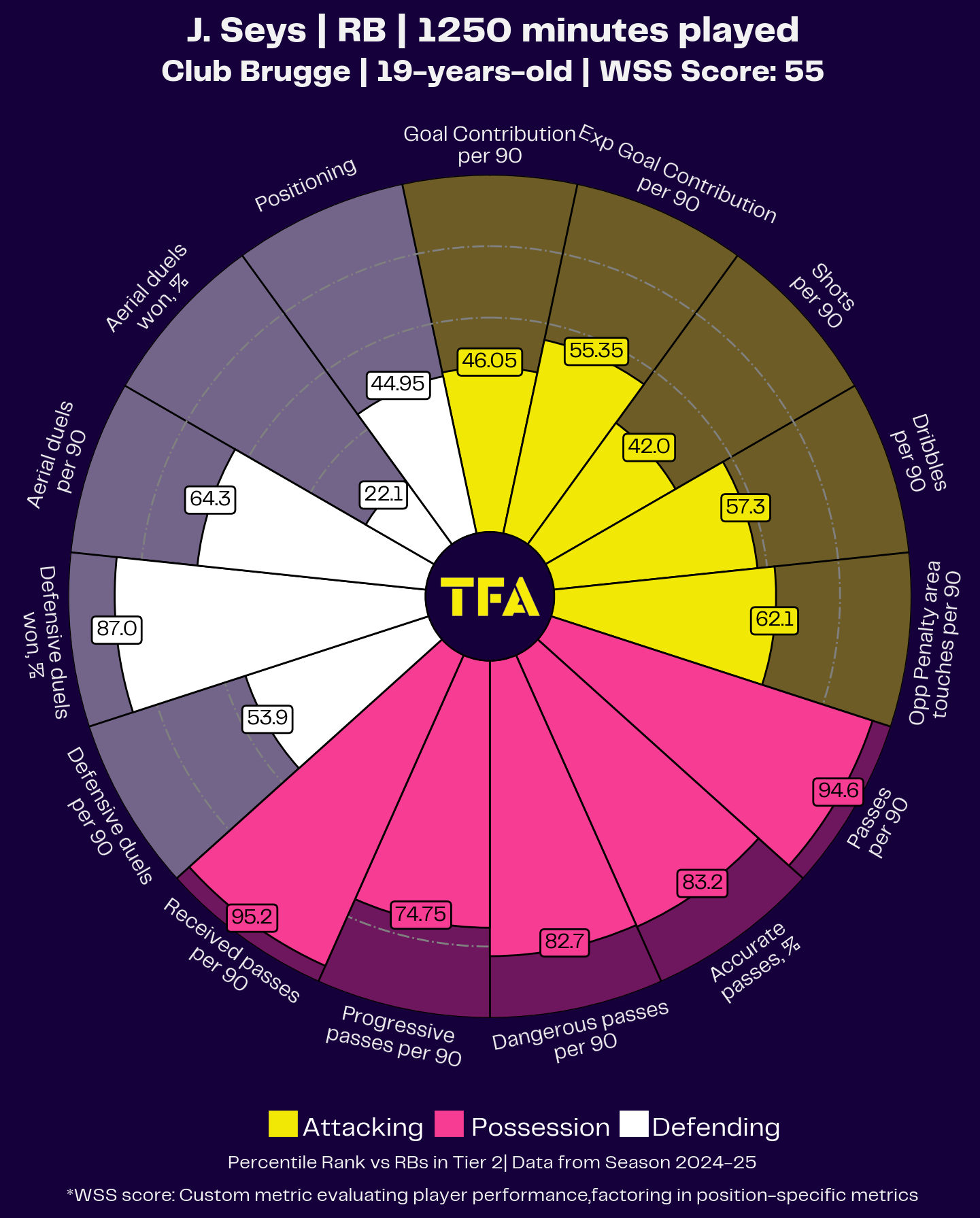
As shown in the radar map above, his 2024/25 season data clearly stand out.
His strong performance in possession ranks him in the 82nd percentile or higher in nearly every metric.
Another essential aspect to highlight above is his impressive win rate in defensive duels.
He ranks in the 87th percentile, which means he is in the top 13% in that area.
This demonstrates his qualities on the defensive side of his game.
While his aerial duels and positioning could use work, his attacking metrics are well-balanced.
Nothing really stands out; his numbers are about average for his position.
Overall, there are no glaring weaknesses going off his radar map, which makes him a well-rounded full-back and is a big reason why he’s gained the trust for a starting role in one of Belgium’s biggest clubs early in his career.
Let’s examine some areas of his game that stand out and could use some work as he enters the New Year.
Joaquin Seys Strengths
One reason for Seys’ rapid progression this year is his confidence and belief in himself, which he expresses on the field through his ball-carrying abilities.
Joaquin Seys Penetrating Carries Map
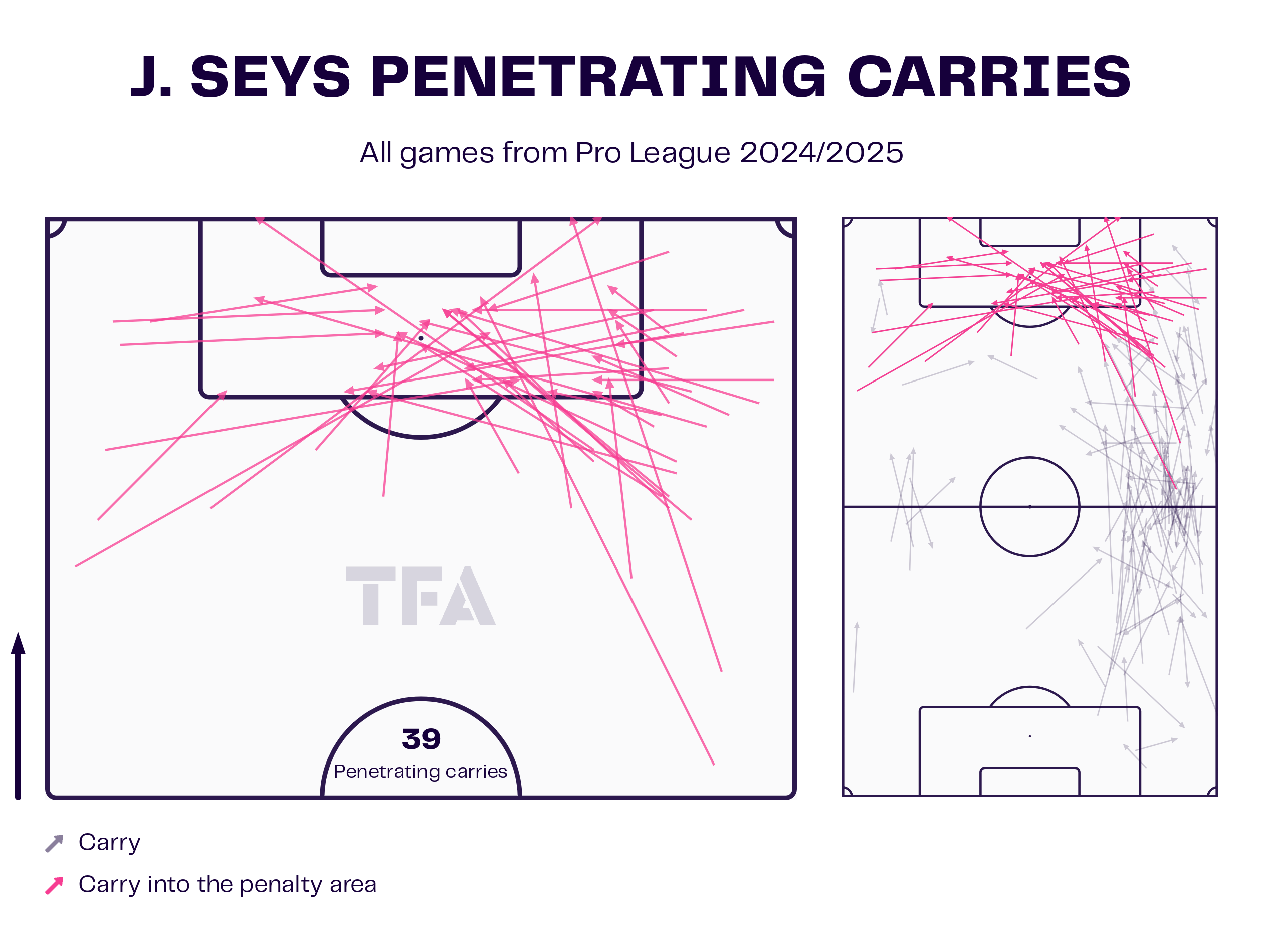
With 39 penetrating carries — displaying his runs across the pitch and into the opposition penalty area with the ball — Seys is a natural with the ball at his feet and is proactive when it comes to progressing the play from deep.
His willingness and courage to move forward make him an essential tool for Club Brugge’s transitional attacks from wide areas.
His ball retention skills are excellent, and he rarely panics, even under pressure.
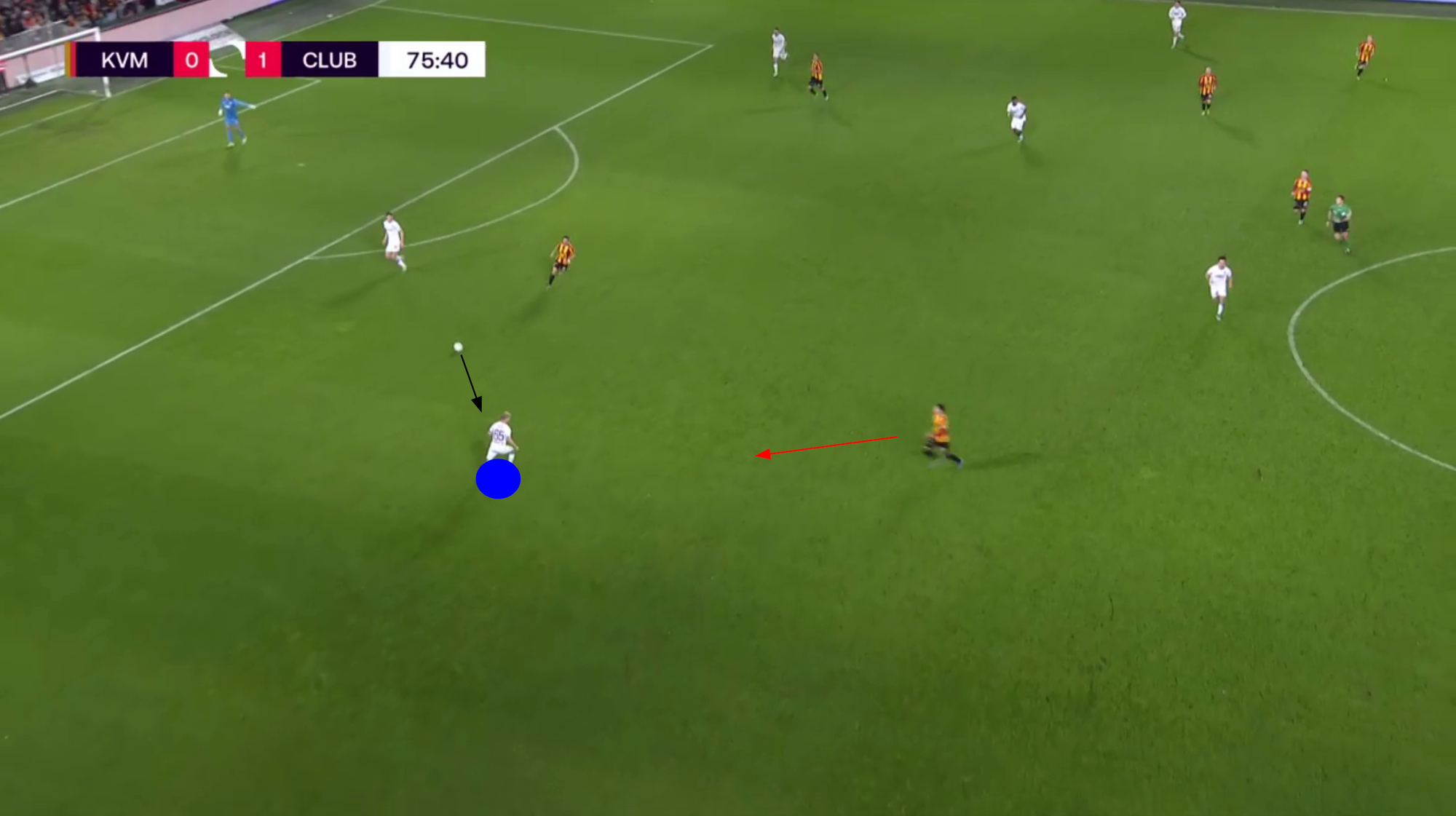
Here’s an example of his ball-carrying abilities and confidence from the game against Mechelen.
Seys is in a deeper position to support his centrebacks during the build-up phase.
As he receives the pass, a Mechelen player comes over to make it difficult for him to decide when the ball arrives at his feet.
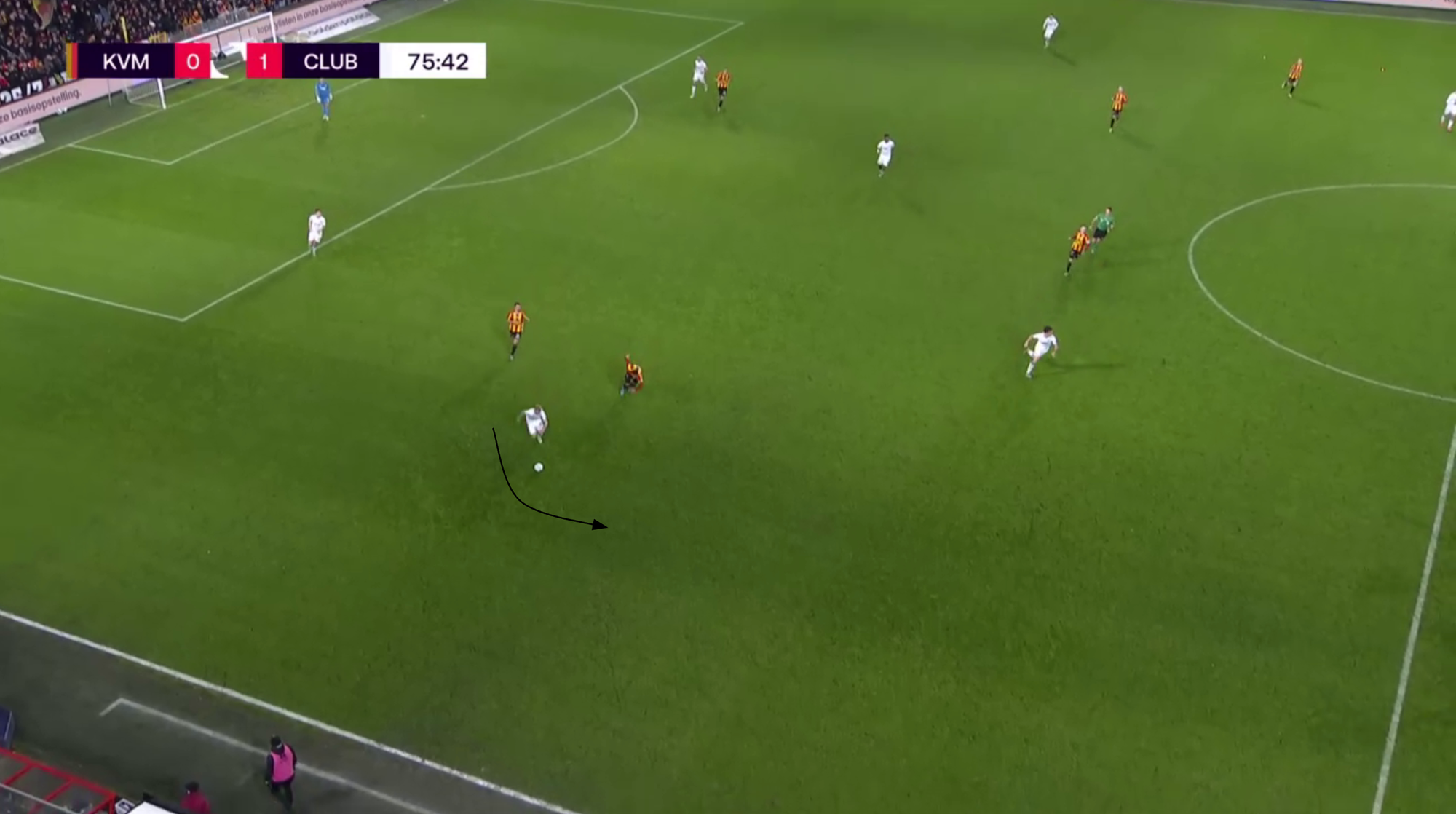
Seys cleverly uses the weight of the pass to guide it in the opposite direction of the run from the player who was attempting to press him.
This allows him to run with the ball into an empty space in front of him and progress the play further upfield.
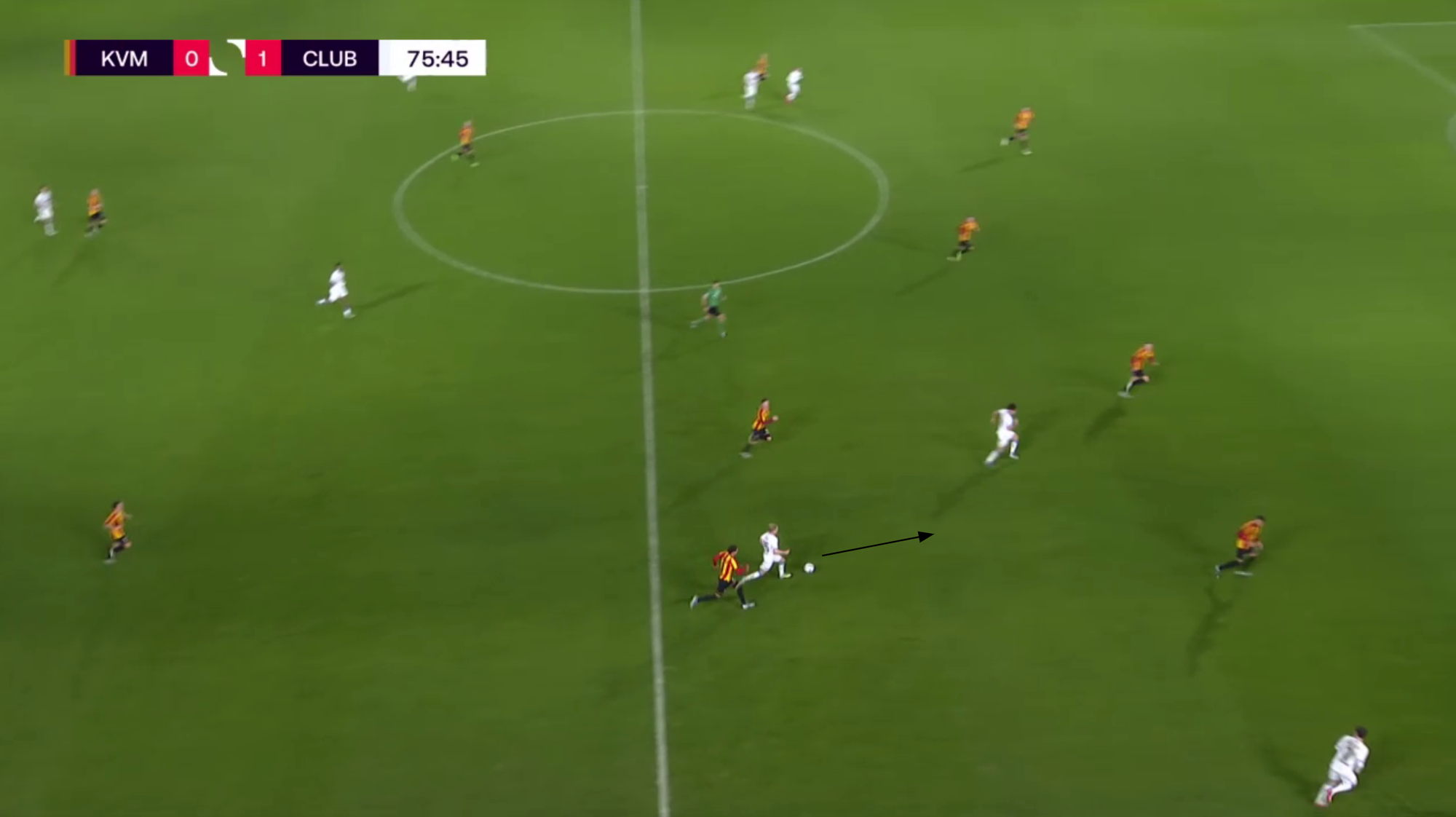
Due to Mechelen’s poor pressing structure, Seys could run some 50-60 yards upfield close to their penalty area after beating the first line of their press.
The important thing here is to highlight his tendencies to carry the ball forward and make good decisions even under pressure.
This example displays some of his games with the ball at his feet.
Joaquin Seys Defensive Territory Map
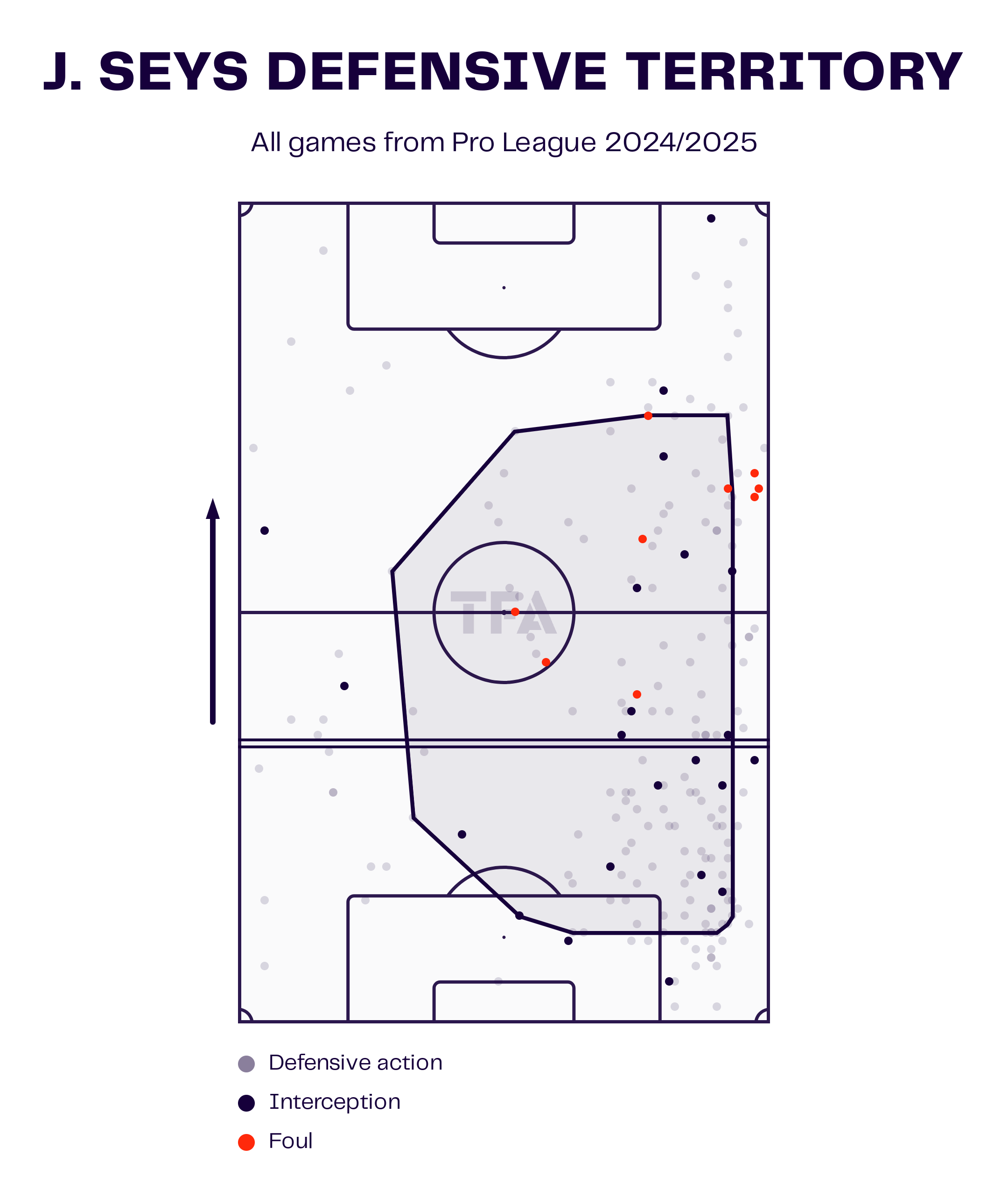
Another strength of his is aggression, which he plays with when it comes to defending and pressing off the ball.
As his defensive territory map above shows, Seys is quite active when defending, taking actions and intercepting all across the right flank and half-space.
This comes from his instincts to push up and be the aggressor when he needs to be or senses the opportunity.
One such example came early in the home game against Gent, which we’ll see below.
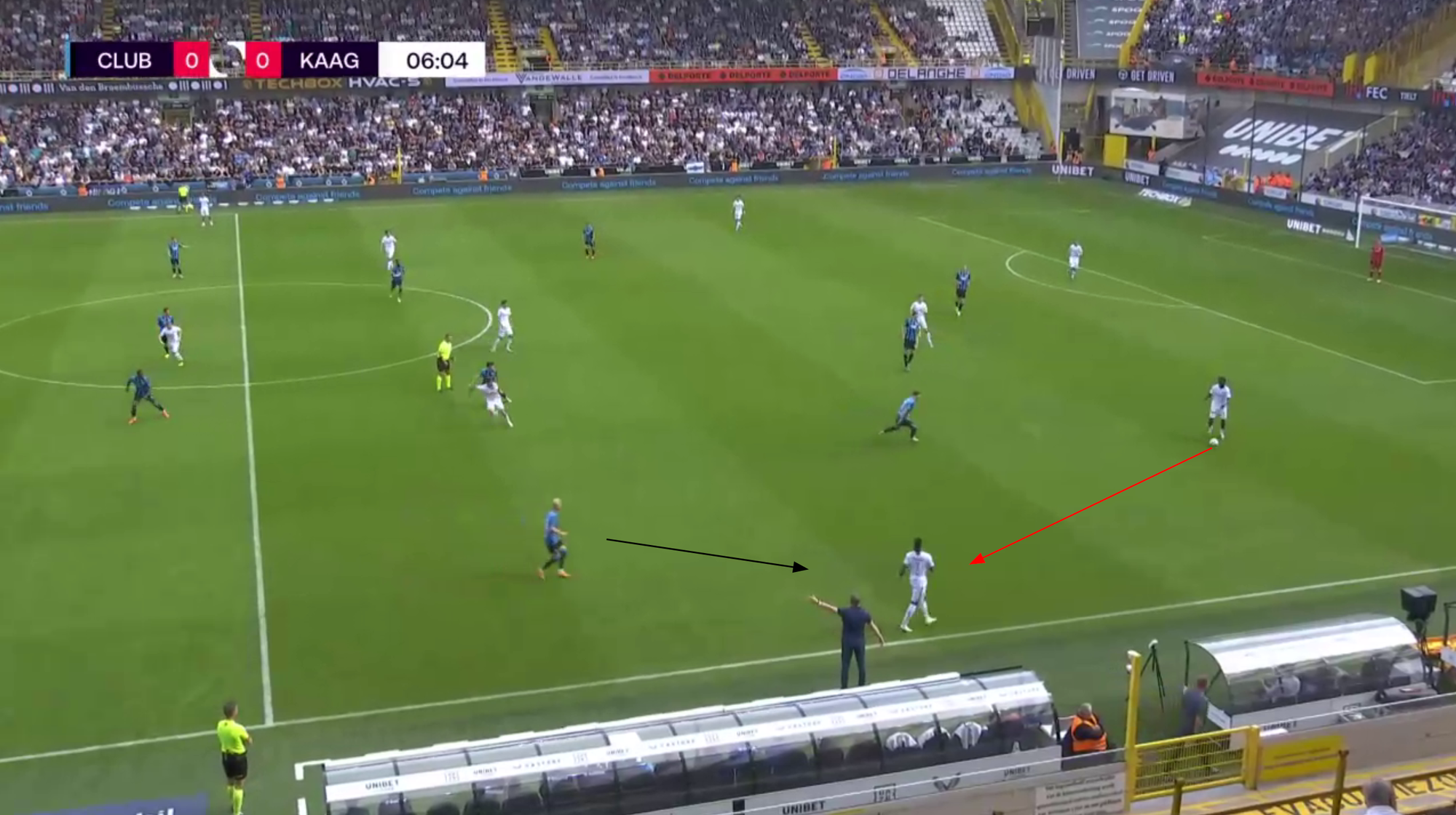
Here, we can see Gent looking to build their attack from the back through their left-hand side and Seys pushing up as the near-side full-back away from the rest of the defensive line.
Before the pass is even played, Seys is already moving towards the player, ready to receive and turn towards the attacking half with the ball.
As Seys has already figured out early in the game, the Gent player in question is predominantly left-footed.
Allowing him time and space to receive the ball and turn towards him could spell danger for him and his side defensively.
So, instead of waiting for the inevitable to happen, he decides to press early, before the ball is played.
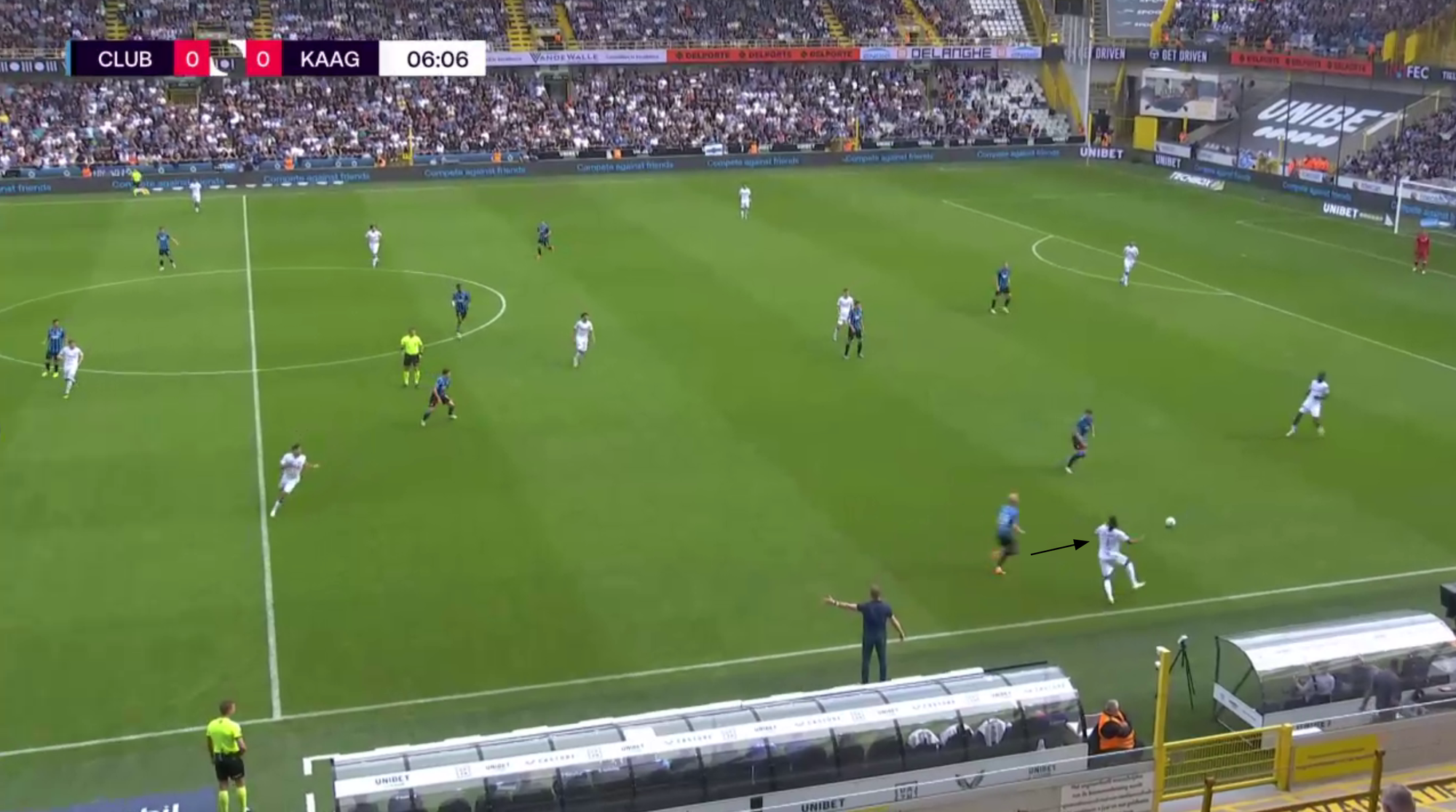
As a result, he can come across to intercept the pass in time and regain possession for his team in the attacking half.
This highlights his intelligent decision-making, timing, and aggression when pressing higher up the field, which have been valuable assets for Club Brugge throughout the season.
Joaquin Seys Areas of Improvement
While Seys doesn’t have any glaring weaknesses, as we’ve covered in this analysis, he will have to improve on some aspects of his game.
One is partially due to his conversion to right-back as a left-footed player.
His left foot makes it more awkward and unnatural for him to go down the byline and cross into the box like most right-footed right-backs would.
Joaquin Seys Crossing Zones Map
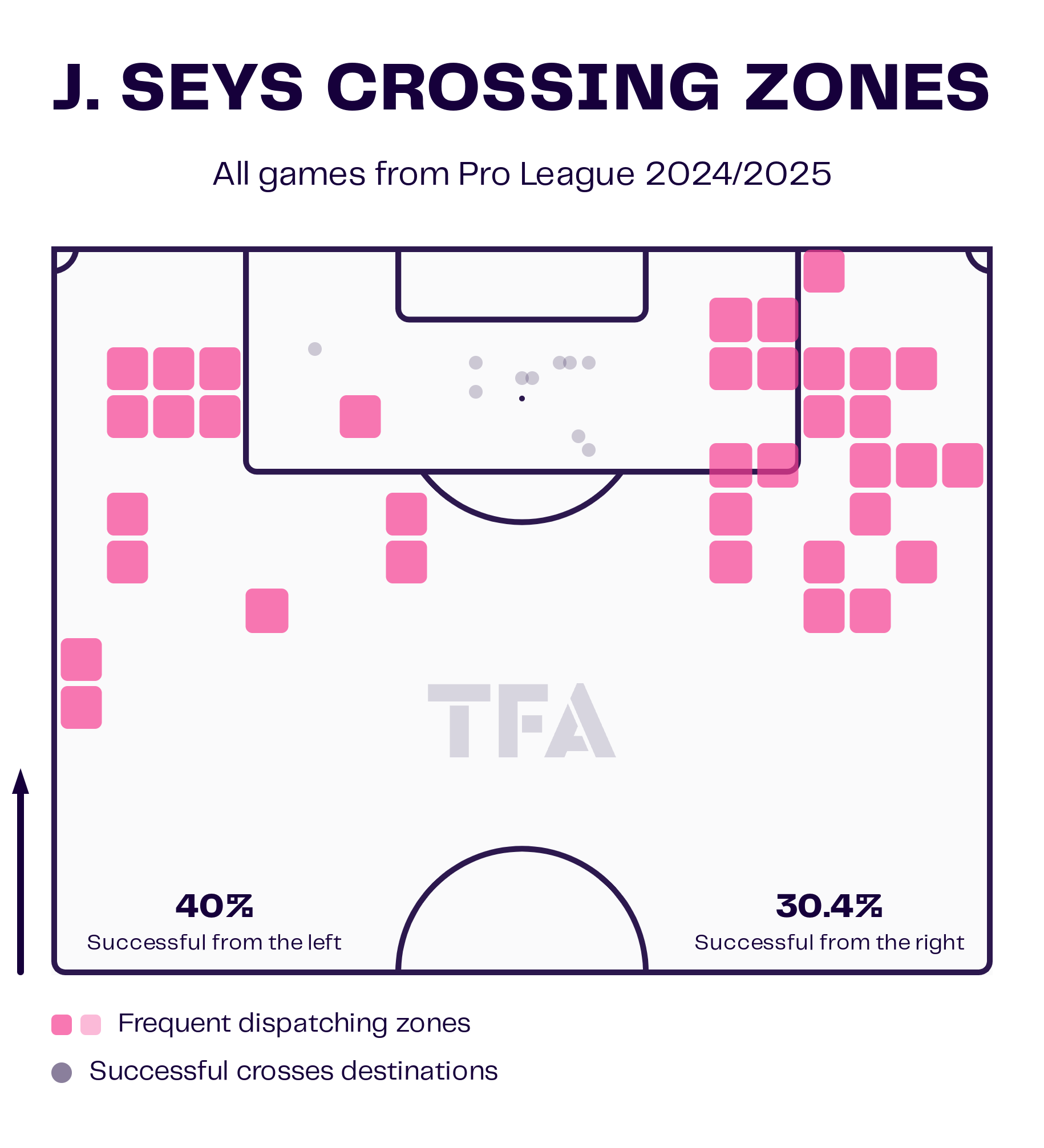
As we can gather from his crossing zones map above from this season, with just a 30% success rate from the right-hand side, it’s obvious that he will need to work on this if he continues playing right-back in the long term.
Only his managers will know whether that’s the plan.
Still, to become a proper two-sided full-back, he will have to invent ways to improve his final third performance, especially in situations where it’s natural to cross on his right.
One way he can achieve separation from his marker in tighter spaces is to use his dribbling ability.
Still, in general, he may have to keep improving his weak foot to produce more qualitative deliveries into the penalty area.
Another area that will need some work is his defending, specifically his aerial duels and defensive positioning.
We already noted a deficiency in both when looking at his radar map earlier and the lower percentile ranks in those metrics.
Let’s take one of the situations in which he could work on his defensive positioning.
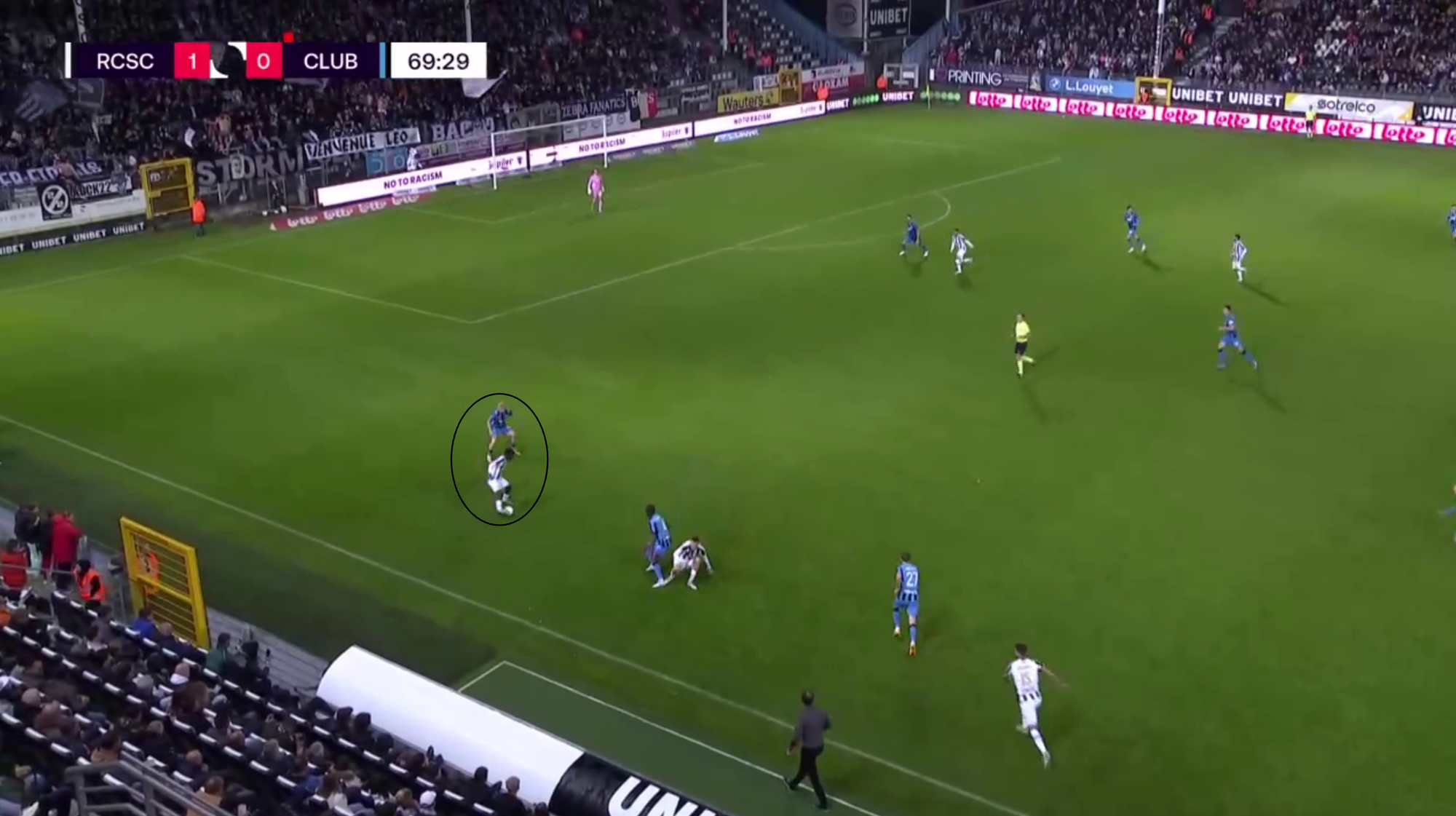
We’ve already mentioned how he likes to press higher up the field, which can create spaces behind him if he fails to intercept the ball.
In this example, we’ll instead examine a situation in which he defends from a deeper position in a 1v1 match against an opposing winger.
Above, we can see the Royal Charleroi SC left winger receiving the ball with his back facing Seys.
Although Seys could try to get tighter and nick the ball here, he opts to stay static.
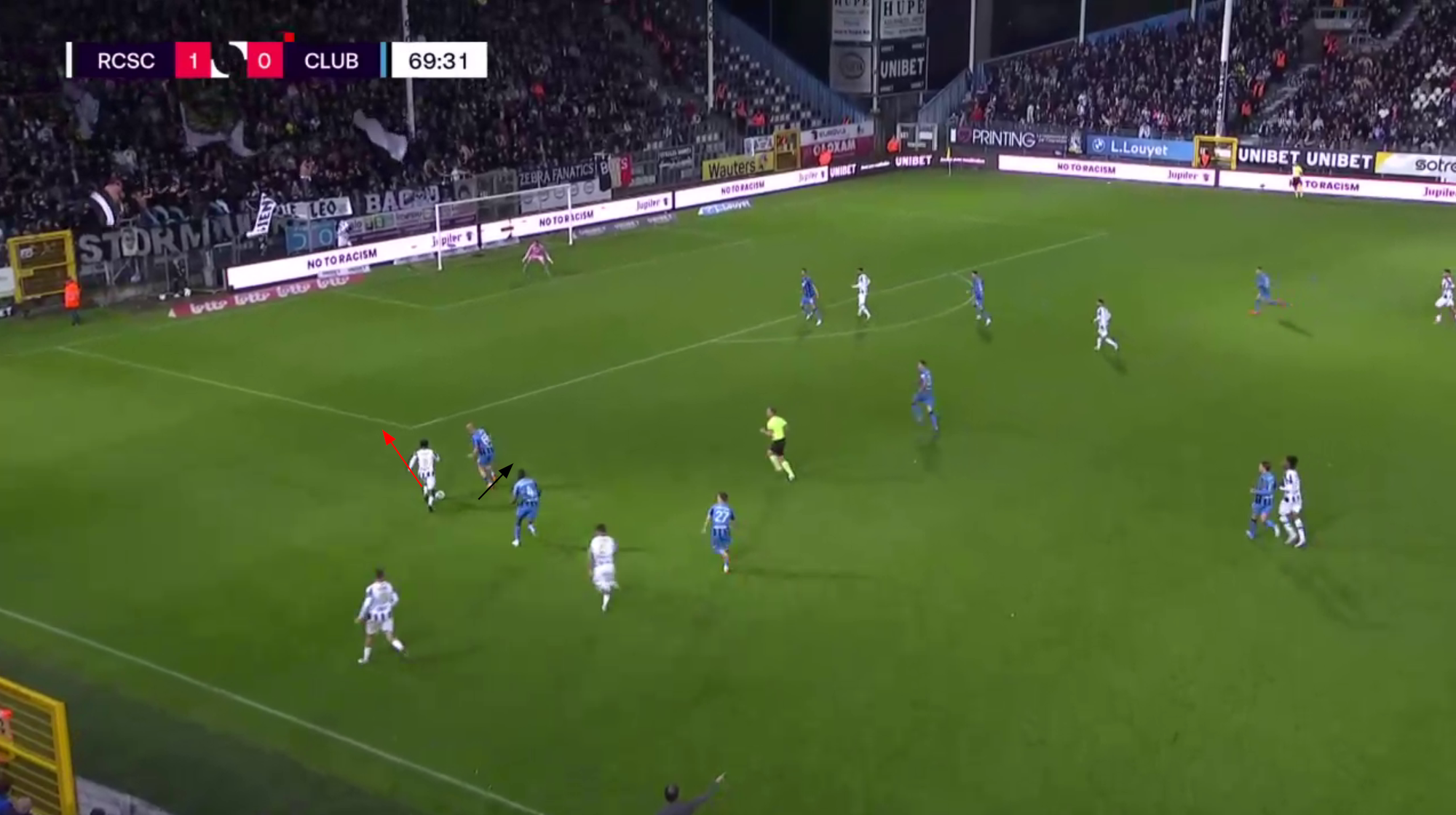
While that mistake allowed the winger to turn towards goal, we’ll highlight here what Seys does when that happens, which signals a flaw in his defensive game.
The arrows in the image above indicate two things: the black arrow indicates where Seys should try to take the winger, and the red arrow indicates where the winger wants to go, given that he’s on his preferred side.
Seys instead leaves the room open for the winger to run outside of him, forcing him to defend on his weaker side.
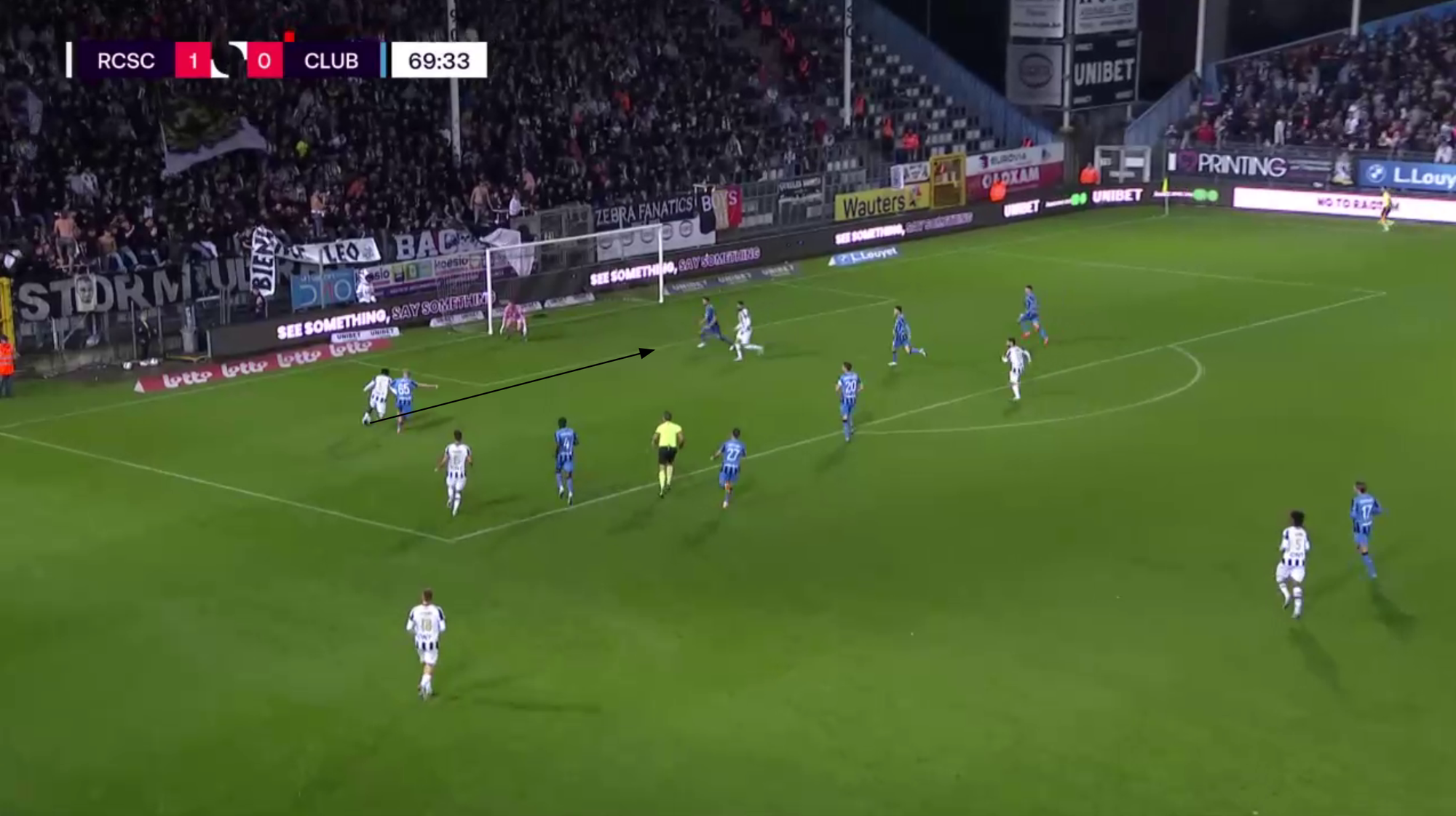
Instead, he ends up getting beat in the final ten yards as he tries to get tighter, and the Charleroi winger gets the chance to pull the ball back across the six-yard box for a goalscoring chance, which in the end wasn’t converted.
This example highlights the discomfort Seys has when defending against left-footed wingers who like to go on the outside, meaning he has to defend on his weaker foot.
Just as it’s awkward for players playing on the opposite side of their preferred foot to cross the ball into the box, the same applies to players when defending on the flanks against tricky wingers.
In this situation, Seys could have done more to show the winger inside but instead gambled on himself to win a 1v1 duel on the outside and didn’t manage to do so here.
Again, it showcases his confidence in his abilities, but from a defensive standpoint, it’s not something he can rely on every single time.
If he stays at right-back long term, he will have to learn how to manipulate these situations better.
Conclusion
Joaquin Seys has made a remarkable progression in under half a year, becoming a regular fixture in Club Brugge’s starting eleven after playing for their reserves just last season.
His efforts didn’t stop there.
He was crowned the best young player in the league for 2024 and earned himself a call to the Belgian national side before even playing for the U21s.
All of this has him earmarked as one young talent to watch in 2025, and that’s why he’s in Total Football Analysis Breakout XI.
It will be interesting to follow the trajectory of his development over the next 12 months, with senior national team caps likely to come given Belgium’s relatively doable FIFA World Cup qualifying group and with crunch UEFA Champions League fixtures against Juventus and Manchester City for his club who are vying for a knockout berth.
Seys will be looking to impress on these occasions, and if he does so, a transfer out of Belgium to one of the elite leagues in 2025 may be on the horizon.

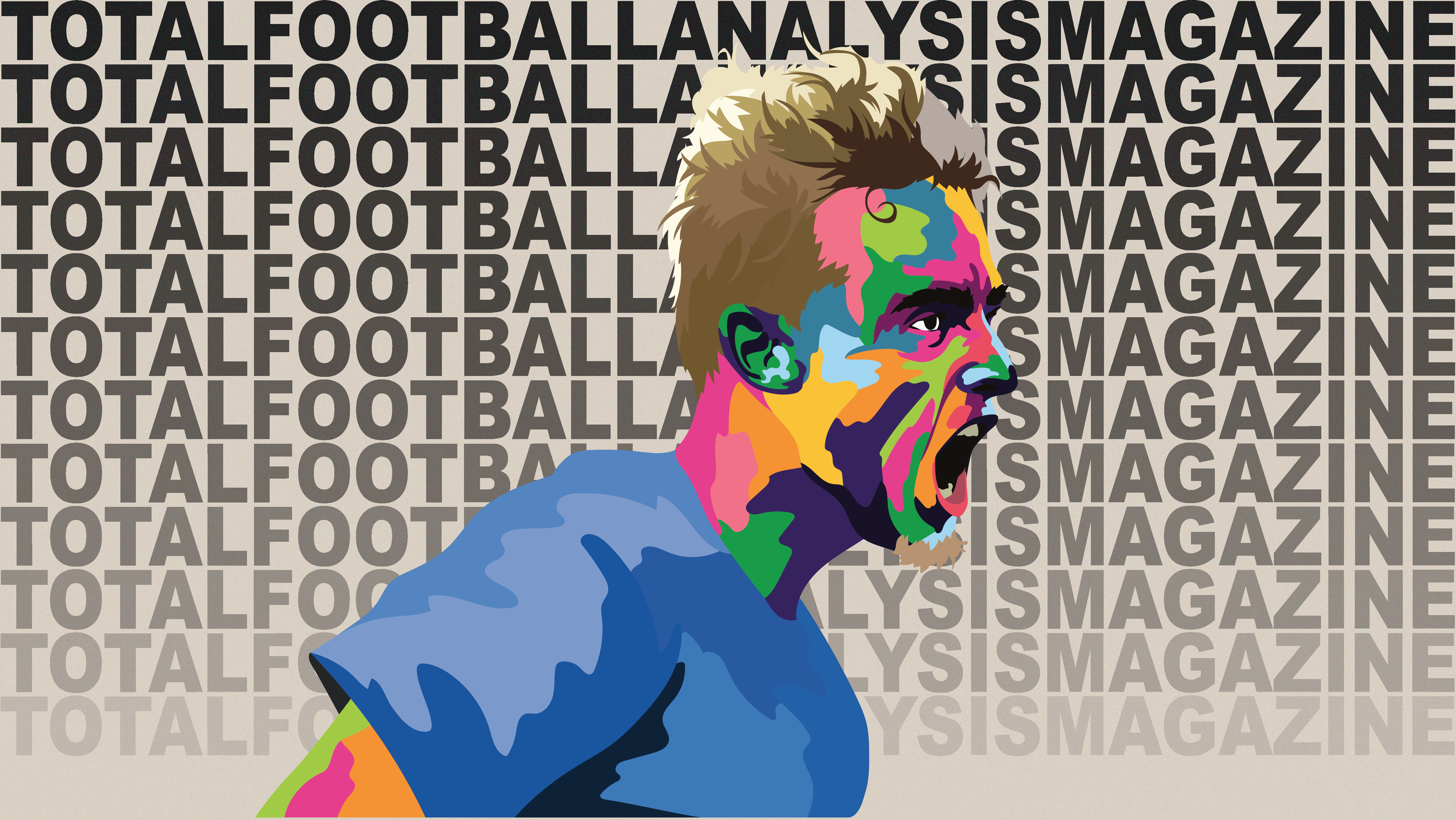


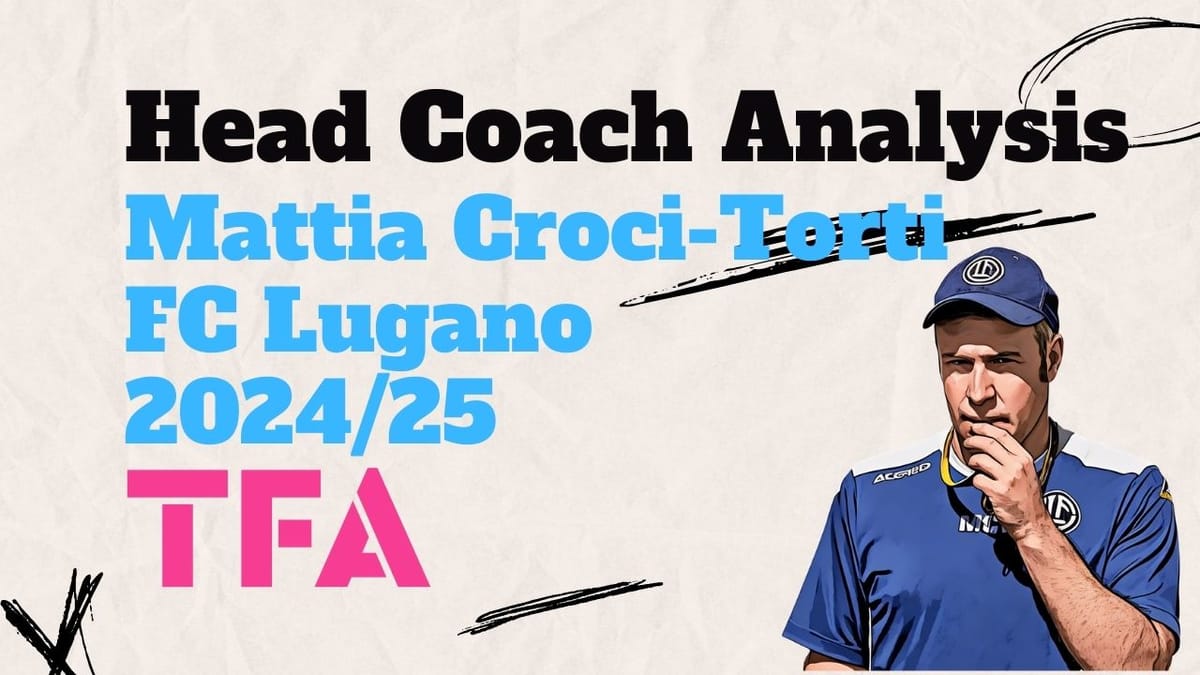
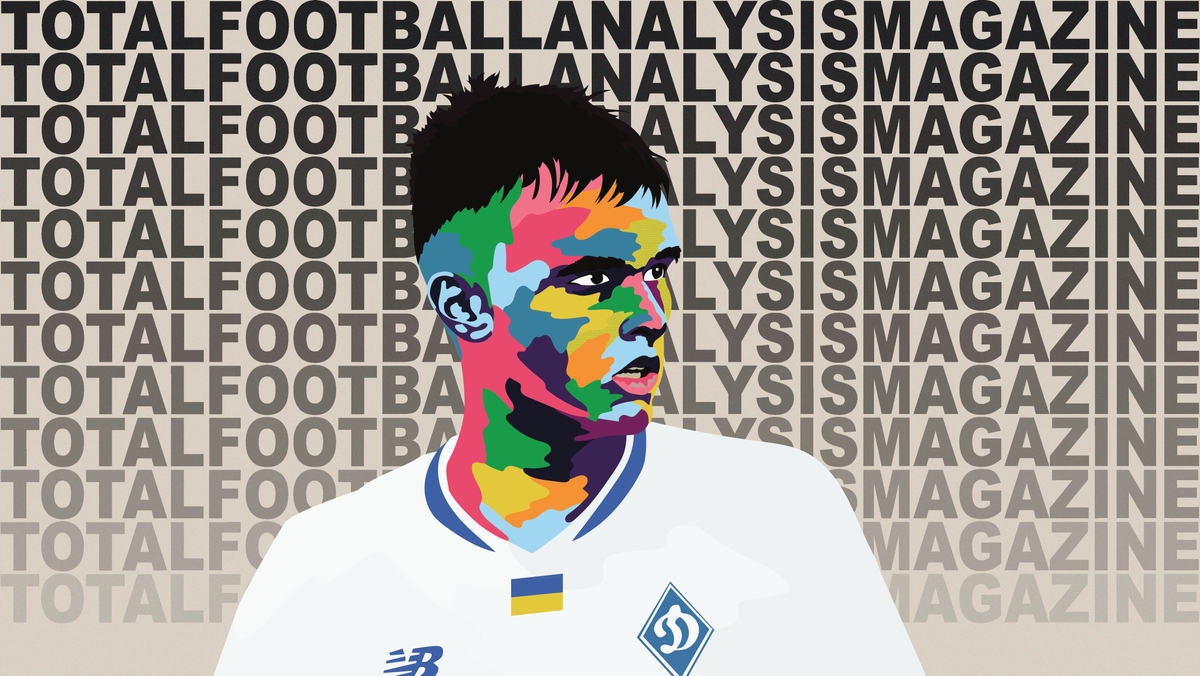
Comments